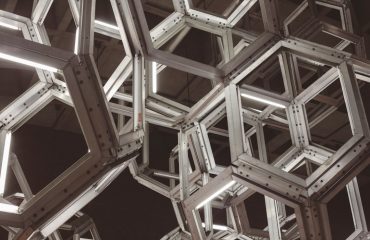Steel frames offer unparalleled strength, flexibility, and speed of construction, making them a popular choice for a wide range of structures, from high-rise buildings to industrial warehouses. However, designing a robust and efficient steel frame requires a thorough understanding of various engineering principles and design considerations. This comprehensive guide will walk you through the key aspects of steel frame design.
1. Initial Design Concepts and Load Determination
The design process begins with clearly defining the project’s scope and objectives. This includes understanding the intended use of the structure, determining the required floor space and height, and identifying any specific design requirements. Crucially, a thorough load analysis must be performed. This involves identifying all potential loads acting on the structure, including:
- Dead Loads: The weight of the structure itself, including steel members, cladding, roofing, and mechanical equipment.
- Live Loads: Variable loads such as occupancy loads (people, furniture), snow loads, and wind loads. These are often determined using relevant building codes and standards.
- Environmental Loads: Loads due to seismic activity (earthquakes), temperature changes, and soil pressure.
Accurate load determination is paramount; underestimation can lead to structural failure, while overestimation can result in unnecessary material costs. Software tools like ETABS, SAP2000, and RISA-3D are commonly used for load calculations and structural analysis.
2. Structural Analysis and Member Selection
Once the loads are determined, a structural analysis is performed to determine the internal forces (axial forces, shear forces, and bending moments) in each member of the steel frame. This analysis uses established engineering principles and often involves sophisticated software. The results of the analysis dictate the selection of appropriate steel sections. Factors influencing member selection include:
- Strength: The section must be strong enough to resist the calculated internal forces without exceeding its allowable stress.
- Stability: The section should be adequately braced to prevent buckling or lateral-torsional instability.
- Deflection: The section must limit deflections to acceptable levels to ensure serviceability and prevent damage to non-structural elements.
- Cost-effectiveness: Balancing strength and stability with economical section selection is crucial.
Steel design codes, such as AISC (American Institute of Steel Construction) and Eurocode 3, provide guidelines for member selection and design.
3. Connection Design: The Heart of the Steel Frame
Connections are critical components of a steel frame, transferring loads between members and ensuring the overall structural integrity. The design of connections requires careful consideration of several factors:
- Connection Type: Various connection types exist, including bolted connections, welded connections, and a combination of both. The choice depends on factors like load magnitude, accessibility, and fabrication costs.
- Bolt Selection: Bolts must have sufficient strength and be appropriately sized to resist shear and tensile forces. The type of bolt (e.g., high-strength bolts) is critical.
- Weld Design: Welds must be designed to meet strength and ductility requirements. The type of weld (e.g., fillet weld, groove weld) and weld size are determined based on the load transfer requirements.
- Connection Detailing: Accurate detailing of connections is crucial for proper fabrication and erection. This includes precise dimensions, bolt patterns, and weld specifications.
Proper connection design is essential to prevent premature failure and ensure the overall stability of the structure.
4. Fire Protection and Corrosion Control
Steel’s susceptibility to fire and corrosion necessitates the implementation of appropriate protection measures. Fire protection strategies aim to prevent the loss of steel strength at elevated temperatures, while corrosion protection aims to extend the lifespan of the structure.
- Fire Protection: Common methods include intumescent coatings, spray-applied fire-resistant materials (SFRMs), and fire-resistant board. The required level of fire protection depends on the occupancy classification and building codes.
- Corrosion Protection: This usually involves the application of protective coatings, such as paints or galvanization. The choice of coating depends on the environmental conditions and the desired lifespan of the structure.
Ignoring fire and corrosion protection can significantly compromise the safety and longevity of the steel frame.
5. Detailing and Fabrication: From Design to Reality
The final stage involves the preparation of detailed shop drawings for fabrication and erection. These drawings provide precise information to the fabricator, including:
- Member sizes and lengths: Accurate dimensions of all steel sections.
- Connection details: Precise specifications for all connections, including bolt patterns, weld sizes, and types.
- Material specifications: Details on the required steel grade and other material properties.
- Erection diagrams: Instructions on how to assemble the steel frame on-site.
Accurate and thorough detailing is essential for efficient fabrication and error-free erection, ensuring the successful completion of the project.
Designing steel frames is a complex process requiring expertise in structural engineering, material science, and construction practices. This guide provides a foundational overview; consulting with experienced structural engineers is crucial for any significant steel frame project.
SEO Tags:
steel frame design, structural steel design, steel building design, steel frame analysis, connection design




